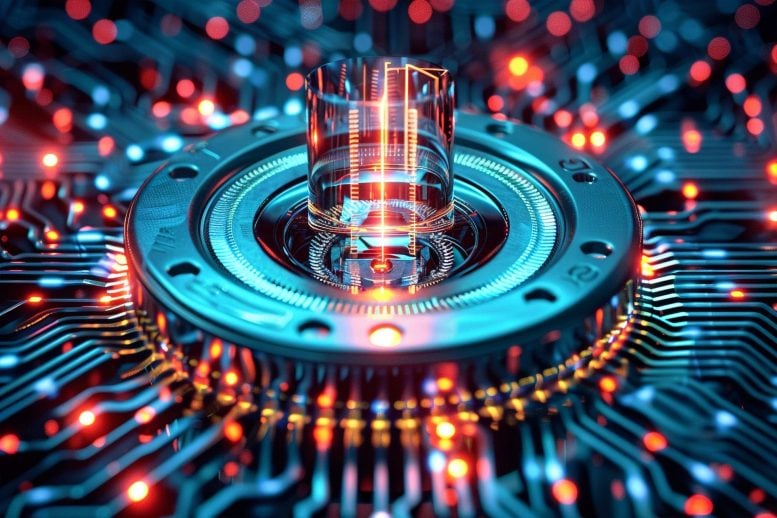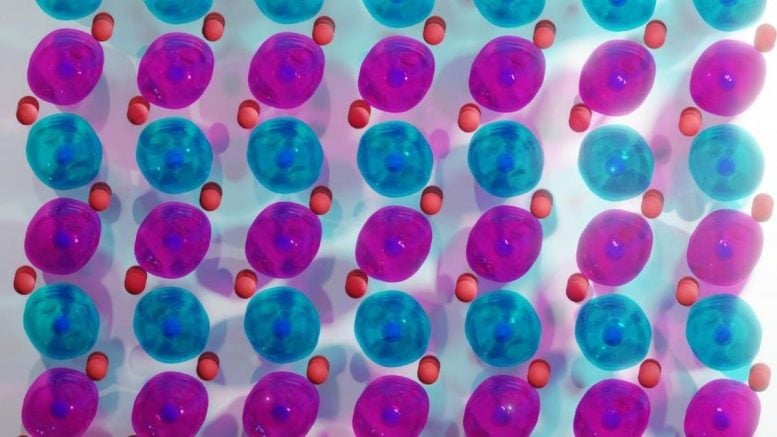
Altermagnets, a newly discovered class of materials, show great potential for spin-based electronics due to their unique magnetic properties. (Artist’s concept.) Credit: SciTechDaily.com
Altermagnets offer a blend of fast dynamics and high spin polarization, with groundbreaking research showcasing their potential in spintronics.
Altermagnets represent a newly recognized class of materials in magnetism that could enable novel applications in spin-based electronics. Their magnetically ordered state consists of an antiparallel arrangement of microscopic magnetic moments, so-called spins, as in antiferromagnets.
In contrast to antiferromagnetism, however, the altermagnetic state with zero net-magnetization enables the generation of electrical currents with spin polarization, as required in spin-based electronics. Thus, altermagnets combine the advantages of antiferromagnets, i.e., ultrafast dynamics, and ferromagnets, i.e., large spin polarization.

The crystal structure of altermagnetic CrSb: the colored bubbles around the Cr atoms (blue) correspond to iso-spin density surfaces. Their anisotropy enables spin-polarized currents. Credit: Libor Šmejkal and Anna Birk Hellenes / JGU
Breakthrough in Altermagnetic Research
In collaboration with a theoretical team led by Professor Jairo Sinova and Dr. Libor Šmejkal, experimental physicist Dr. Sonka Reimers and her colleagues in Professor Mathias Kläui’s lab at the Institute of Physics at Johannes Gutenberg University Mainz (JGU) have demonstrated altermagnetic electronic band splitting associated with spin polarization in CrSb.
“The magnitude of this spitting, observed in a good conductor and at room temperature, is extraordinary and promising with regard to electronic applications of altermagnetic materials,” said Professor Martin Jourdan, coordinator of the study recently published in <span class="glossaryLink" aria-describedby="tt" data-cmtooltip="
” data-gt-translate-attributes=”[{"attribute":"data-cmtooltip", "format":"html"}]” tabindex=”0″ role=”link”>Nature Communications.
Reference: “Direct observation of altermagnetic band splitting in CrSb thin films” by Sonka Reimers, Lukas Odenbreit, Libor Šmejkal, Vladimir N. Strocov, Procopios Constantinou, Anna B. Hellenes, Rodrigo Jaeschke Ubiergo, Warlley H. Campos, Venkata K. Bharadwaj, Atasi Chakraborty, Thibaud Denneulin, Wen Shi, Rafal E. Dunin-Borkowski, Suvadip Das, Mathias Kläui, Jairo Sinova and Martin Jourdan, 8 March 2024, Nature Communications.
DOI: 10.1038/s41467-024-46476-5
